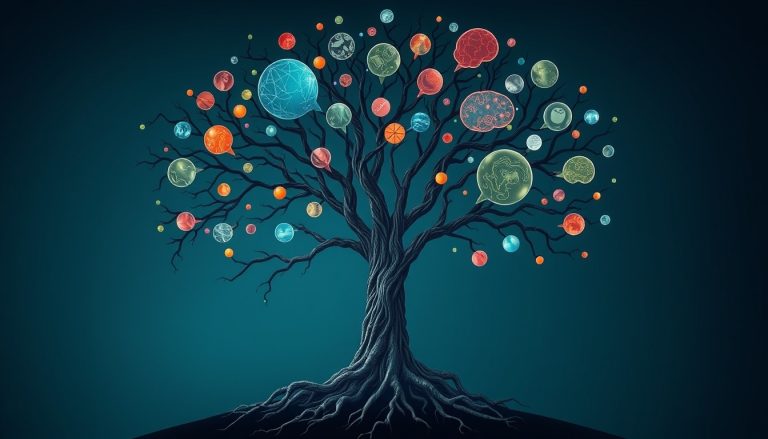Growing Through Life: An Accessible Guide to Developmental Psychology
From the first breath to the final years, human beings are in a constant state of transformation. How does a helpless infant evolve into a complex adult capable of abstract thought, deep emotional bonds, and intricate social navigation? This question lies at the heart of developmental psychology, the scientific field dedicated to understanding the continuity and change that defines the human experience. This guide will explore the core principles, landmark theories, and profound real-world applications of this fascinating discipline, providing a map to the journey we all share.
Opening Doors: What Is Developmental Psychology?
At its core, developmental psychology is the scientific study of how and why people grow, change, and adapt throughout their lives. According to the American Psychological Association, it examines human growth across a lifetime, seeking to understand the patterns and processes that guide our development. This field is not limited to child psychology or adolescence; it encompasses the entire human lifespan, from conception through infancy, childhood, adolescence, adulthood, and the aging process. It investigates how our thinking, feeling, and behavior change over time, offering invaluable insights into human development.

The Three Pillars of Change
To systematically study a lifetime of change, developmental psychologists examine growth across three major interconnected dimensions. Understanding these pillars is essential to grasping the full scope of how we evolve.
Physical Development
This dimension involves the growth and change in the body and brain, the senses, motor skills, and health and wellness. It tracks predictable sequences of growth, such as an infant learning to roll over, sit, crawl, and then walk. It also examines the physical transformations of puberty and the physiological changes that accompany aging.

Cognitive Development
Cognitive development focuses on learning, attention, memory, language acquisition, thinking, reasoning, and creativity. This area is home to some of the most influential theories in psychology, which seek to explain how our mental processes evolve.
- Jean Piaget’s Stage Theory: Perhaps the most famous theory of cognitive development, Piaget proposed that children progress through four distinct stages of thinking. His work on schema theory suggests that children build mental frameworks (schemas) to understand the world, which they adapt through experience.
- Lev Vygotsky’s Sociocultural Theory: In contrast to Piaget’s focus on individual discovery, Russian psychologist Lev Vygotsky emphasized the crucial role of social interaction and culture. He proposed the concept of the zone of proximal development (ZPD), which is the gap between what a learner can do independently and what they can achieve with guidance. This highlights how learning is a collaborative process, deeply shaped by our cultural psychology and social environment.
Social-Emotional Development
This pillar examines emotions, personality development, and social relationships. It explores how we connect with others, understand our own feelings, and develop a sense of self. Key theories in this domain provide a rich understanding of our inner worlds and interpersonal lives.
- Erik Erikson’s Psychosocial Stages: Erik Erikson proposed a theory of development that spans the entire life, consisting of eight stages. At each stage, an individual faces a specific psychosocial crisis (e.g., trust vs. mistrust in infancy) that must be resolved to develop a healthy personality.
- Attachment Theory: Pioneered by John Bowlby and expanded by Mary Ainsworth, Attachment Theory is one of the most significant concepts in social-emotional development. It posits that the early bonds formed between infants and their caregivers have a profound impact on social and emotional regulation throughout life, shaping future relationships.
Nature, Nurture, and the Path of Growth
One of the oldest and most fundamental questions in psychology is the impact of nature vs nurture on child development. Does our path in life result from our genetic inheritance (nature) or our life experiences (nurture)? Developmental psychology demonstrates that this is not an either/or question. Instead, human development is a product of the intricate and continuous interaction between heredity and environment.

Modern developmental psychology views development not as a battle between nature and nurture, but as an intricate dance where genes provide the blueprint and experience choreographs the steps.
Our genetic makeup—the “nature” component—provides a foundation for our traits and predispositions, some of which are explained within the framework of evolutionary psychology, which examines the adaptive roots of our behaviors. However, our environment—including our family, culture, education, and social relationships—powerfully shapes how these genetic potentials are expressed. This dynamic interplay is made possible by neuroplasticity, the brain’s remarkable ability to reorganize and form new neural connections in response to learning and experience. This capacity for change is most potent in early life but continues throughout the lifespan.
Research and Real-World Impact
The insights of developmental psychology are not confined to academic journals. The research informs critical real-world practices that support healthy human growth across society. The field uses various research methods used in developmental psychology studies, from longitudinal studies that track individuals over time to cross-sectional studies that compare different age groups at once. While historically dominated by Western perspectives, there is a growing effort to incorporate more culturally diverse research to create a more universal understanding of development.
Educational Psychology and Parenting
The role of developmental psychology in education is immense. Teachers apply Piaget’s theories to design age-appropriate curricula and use Vygotsky’s ZPD to scaffold learning for students. Understanding common developmental milestones helps educators and parents identify potential developmental disorders or delays early on, enabling timely intervention. Knowledge of different parenting styles and their effects on child outcomes empowers parents to create supportive and nurturing home environments.

Adolescent Development and Well-being
Adolescent psychology leverages developmental principles to navigate the unique challenges of the teenage years. This includes understanding the cognitive shifts that lead to concepts like the imaginary audience, where teens feel they are constantly being watched and judged. This knowledge helps therapists, parents, and educators support adolescents through the critical process of identity formation and address challenges in adolescent social-emotional development.
Career Paths and Future Directions
This vast field offers diverse career paths in developmental psychology. Professionals work as researchers in academia, clinicians specializing in child or family therapy, consultants for educational programs, and policy advisors for government agencies. By applying research findings, these experts contribute to creating environments that foster positive development and well-being, a goal shared with the field of positive psychology, which focuses on human flourishing.
Full Circle: Taking Developmental Psychology Forward
The field of developmental psychology continues to evolve. Current debates, as outlined in publications like those from Simply Psychology, challenge older models and push for more dynamic perspectives. The tension between stage-based theories (like Piaget’s) and dynamic systems theories, which view development as a more fluid and interconnected process, is driving innovation. Researchers are increasingly moving away from simple biological essentialism and toward a nuanced understanding of neuroplasticity, recognizing that development is a lifelong, adaptive process. Looking ahead, the field is committed to optimizing human development by translating complex research into practical strategies that help individuals thrive at every stage of life.

From the first flicker of consciousness to the wisdom of old age, developmental psychology offers a powerful lens through which to view the human journey. It reveals that growth is not a destination but a continuous, dynamic process shaped by a complex interplay of biology, cognition, and our social world.
Key Takeaways
- Development is a Lifelong Journey: Developmental psychology studies change across the entire lifespan, from infancy to old age, focusing on physical, cognitive, and social-emotional growth.
- Theories Provide a Framework: Landmark theories from figures like Jean Piaget, Lev Vygotsky, and Erik Erikson offer essential models for understanding how we think, feel, and relate to others as we mature.
- It’s an Interaction, Not a Contest: The “Nature vs. Nurture” debate is resolved by seeing development as a constant interaction between our genetic predispositions and our environmental experiences.
- Early Attachment is Foundational: As explained by Attachment Theory, secure bonds formed in early childhood are critical for healthy social and emotional development throughout life.
- Knowledge Has Practical Power: Insights from developmental psychology directly inform effective practices in education, parenting, therapy, and social policy, helping to foster well-being across society.







